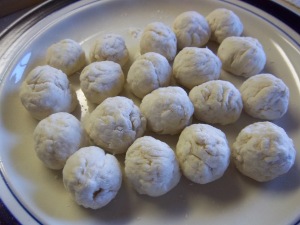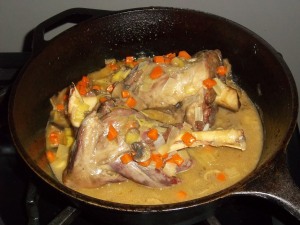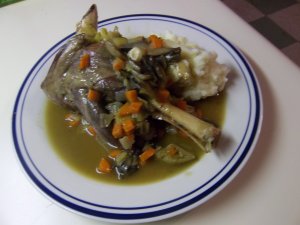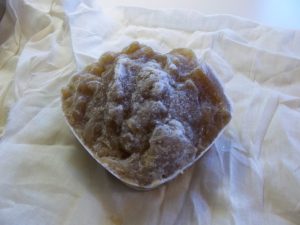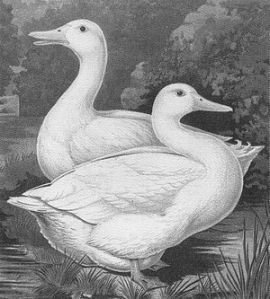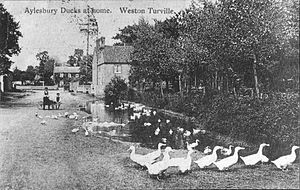It’s Queen Elizabeth the Second’s diamond jubilee this year, so thought I should write a post or two on the Royal Family…
In recent times, the Royal Family have been under threat of being dissolved in Britain, due to what seemed like a total lack of support. It feels that in the past the Royals were revered, but they have fallen in and out of favour with the public rather alot. Popularity during the early twentieth century for example was pretty low. Today, Prince William seems to have picked up today’s royals’ momentum again, but back then it was King George V that turned them around, and what helped him to do that was soup…
The Coronation of King George V and Queen Mary
George became King of England in 1911 in a time of turmoil and constitutional crisis, the Great War was a-brewing and the Royal Family were seen as totally outdated. George himself was vehemently against modernisation, and things seemed a lost cause. George and his wife, Queen Mary, spend much time visiting the poor and doing their bit, but to little effect. The reason for all this was because of the Labour Party’s increasing popularity and also the rumblings of revolt in autocratic Russia. Was the smell of revolution in the air? Possibly, but things began to change during the Great War. In 1917, the Russian Royal family sought asylum in Britain and the British Government duly granted it. But then, in waded George and refused them entry – he knew that helping such an old and autocratic institution would be embarrassing and most probably disastrous for the British Royal Family and for the country too. He realised he must distance the two families. Tsar Nicholas and his family were brutally killed the following year by the Bolsheviks.
The Silver Jubilee edition of The Daily Mirror, 7 May 1935
George then realised that the Royal Family needed to distance themselves from their German ancestry, deciding to anglicise the surname – Saxe-Cobourg-Gotha was not helping them at all during the fight against the Bosch. But what to change it to? After some pondering, the private secretary came up with a name that would inspire Britishness (and George considered himself to be British through and through). The name was, of course, Windsor. Why Windsor? Well, it was because of the ubiquitous Brown Windsor soup served up by every housewife at the time. It was ‘a nourishing brown…with a certain hearty dullness’. Windsor also linked to the ancient Windsor Castle. This was just what George needed, and it really changed the public’s views. Soon after, he introduced the Order of the British Empire (or, OBE), which clinched the whole affair. He died in 1936 much beloved by the British Public.
The people of Yarmouth celebrate the King’s Silver Jubilee
If you like the blogs and podcast I produce, please consider treating me to a virtual coffee or pint, or even a £3 monthly subscription: follow this link for more information.
Brown Windsor soup, later shortened to simply ‘brown soup’ went a little downhill. It became a rather thin and tasteless affair served up in hotels and it gave British soup a bad name. This seems to happen all too often to much of our food. I always blame wartime rationing for these things, but I think I right this time: small amounts of meat made the soup boring, and over time people perhaps simply forgot what Brown Windsor soup used to be like.
Well take it from me, it used to be a delicious thick and hearty soup, perfect for this cold weather we are having. It’s pretty cheap too. This recipe comes from the wonderful cookery writer Lindsey Bareham’s book A Celebration of Soup. Her version cranks up the stodge-o-meter with the addition of horseradish dumplings; and we all need stodge mid-February.
For the dumplings:
4 oz. self-raising flour
¼ tsp salt
2 oz. beef suet
ground black pepper
1 oz. grated horseradish, or a good creamed proprietary brand
Sieve the flour and salt into a bowl and stir in the suet and a seasoning and pepper. Mix in the horseradish and stir in enough cold water to bring the dough together in your hands. The dough should be soft and elastic, but not too sticky to handle. Flour your hands and roll 16 to 20 small dumplings. To cook the dumplings, turn up the heat on soup and plop them in. They should take about 15 to 20 minutes to cook.
For the soup:
1 oz. butter
a small onion, thinly sliced
the green of a leek, thinly sliced
a small carrot, diced
10 oz. stewing steak
1 tbs flour
2 ½ pints of beef stock
a bouquet garni made with 2 bay leaves, 4 parsley stalks, a sprig of thyme and a crushed garlic clove
1 tbs chopped parsley (optional)
Melt the butter in a large saucepan and cook the onion for a few minutes to soften slightly, then add the leek and carrot. Season well with salt and pepper – the salt is very important as it helps to draw the flavour from the vegetables – cover the pan and cook for a further 5 minutes or so. Turn up the heat and add the meat, browning it all over. Next, stir in the flour and cook for a couple more minutes before adding a little stock. Make sure you scrape off any crusty bits of beef or flour from the pan’s bottom with your wooden spoon. Now pour in the rest, bring to the boil, add the bouquet garni and then turn the heat down, cover and simmer for 2 hours. Liquidise the soup and reheat, adding more seasoning should it need adjusting. Stir in the parsley just before you serve the soup.




